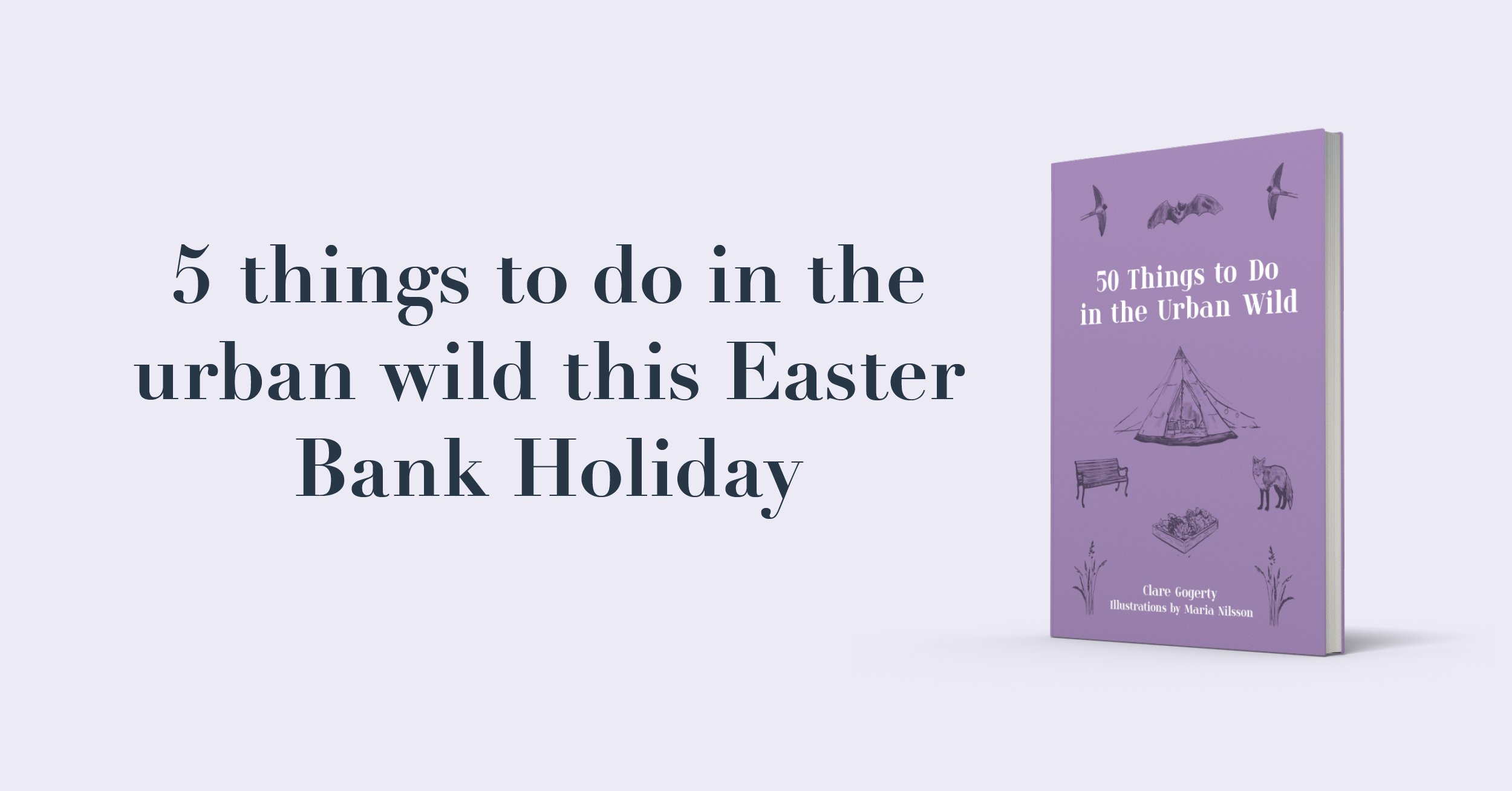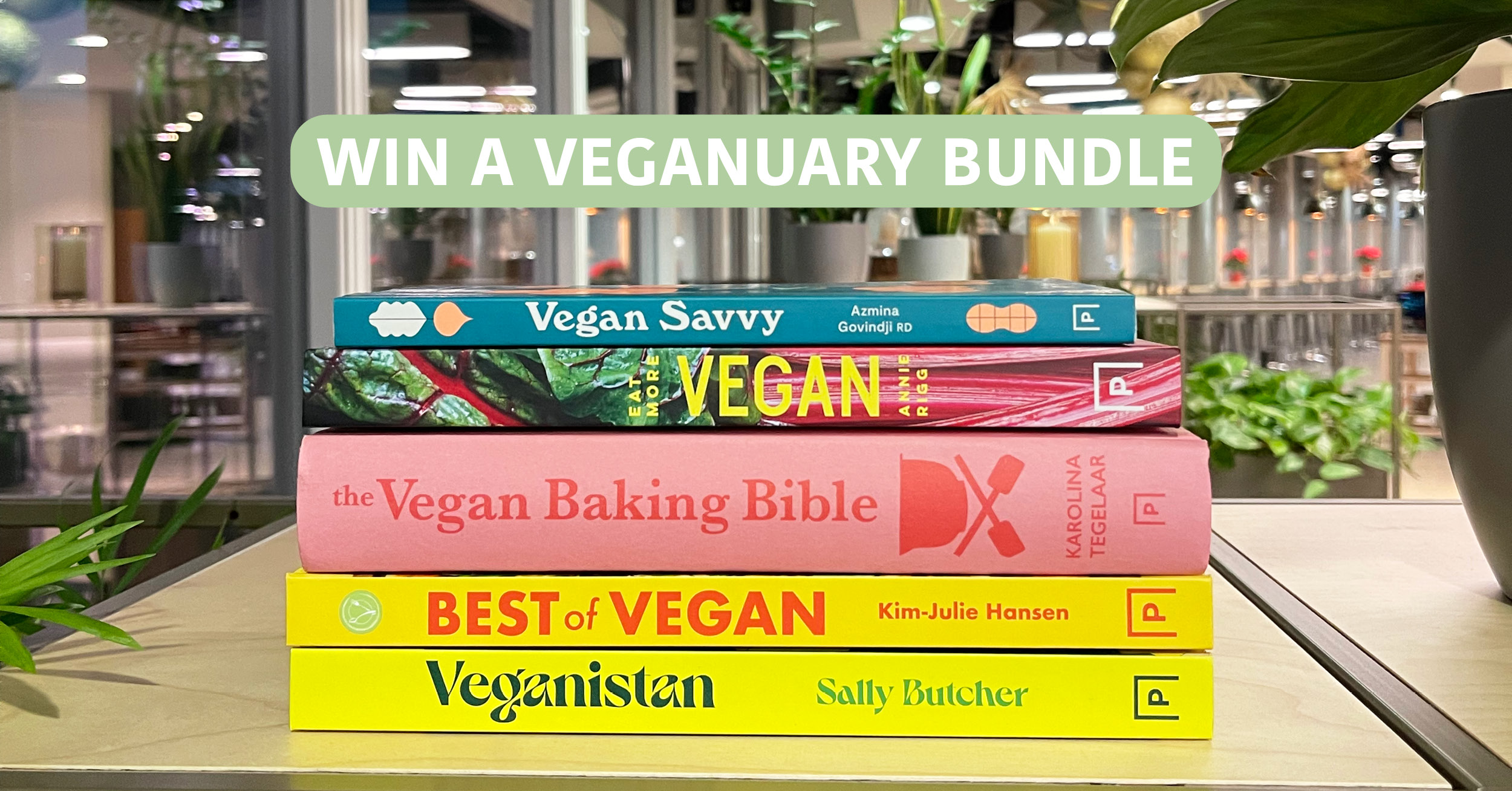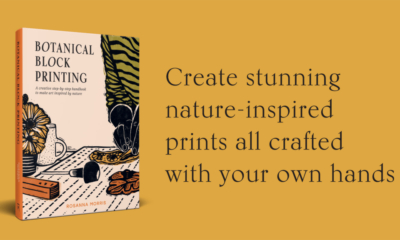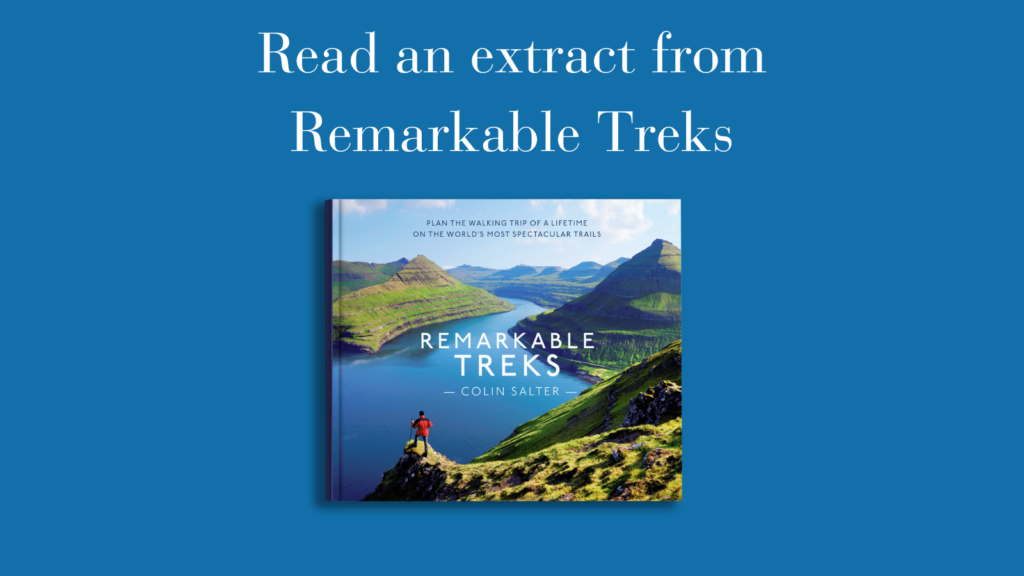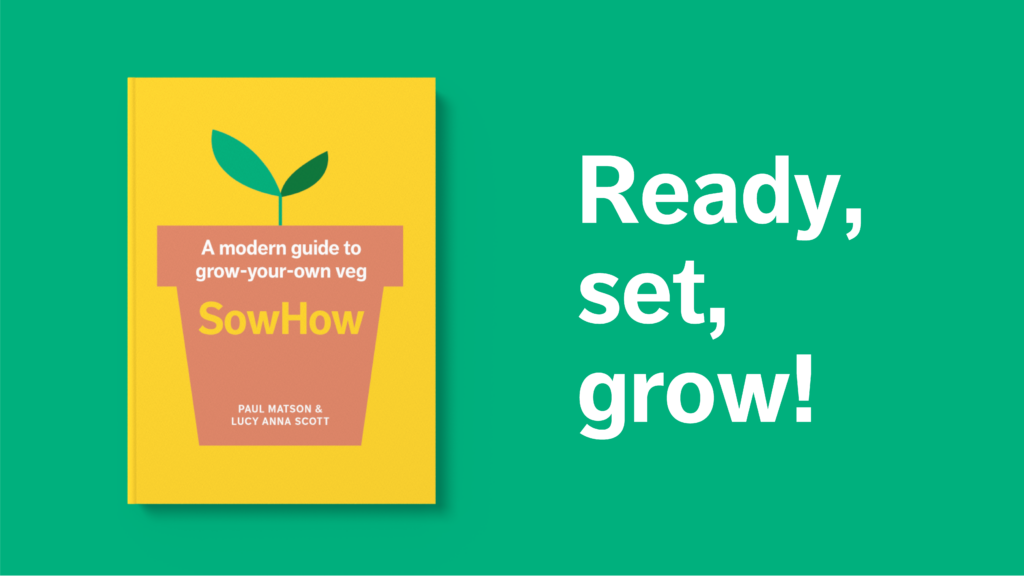With the Easter Bank Holiday fast approaching, lots of people are leaving the cities in favour of the fresh country air. Extracted from Clare Gogerty’s new book 50 Things to Do in the Urban Wild, below a list of 5 budget- and child-friendly things you can get up to this long weekend if you’re staying in the city (or even if you’ve ventured elsewhere!).
Create a leaf journal

Have you ever wandered along a tree-lined street or strolled through a leafy city square and wondered what the trees around you are called? If so, a leaf journal could be the answer. Collect a few good leaf specimens on your travels and place them between the pages of a book so they remain undamaged on your way home. Then save and identify them by either (or both) of the methods below. The more leaves you gather and save, the greater your arboreal knowledge will be.
Leaf rubbing
1. Place a leaf beneath a piece of paper (copier paper is fine).
2. Take a crayon and rub over the leaf evenly, making sure to include the outline so the shape is clearly defined. This works really well with large or distinctively shaped leaves such as maple, oak and ginkgo.
3. Stick the result in your journal.
4. Research the tree. Write your findings beneath the leaf, so you can refer to it later. Questions to ask could include: Is it deciduous? Does it have berries? What colour are its leaves in autumn? What does the bark look like? How high does it grow? How long does it live? You could also research folklore, poetry and songs associated with that particular tree.
Make a leaf press
Preserve leaves by pressing them between pieces of paper. This absorbs moisture, leaving a dried specimen. This process is used by botanists, who catalogue plant specimens in this way, then arrange them systematically in herbaria, so you will be in good company.
1. Cut an A4 piece of cardboard into two equal halves. Take a similar-sized sheet of paper and fold that in half.
2. Place the leaf or leaves in the fold of the paper.
3. Place the paper between the sheets of cardboard. Secure horizontally and vertically with rubber bands.
4. Leave under a stack of heavy books. When all the moisture is removed and the leaf is dry, add it to your journal with accompanying notes for future reference. This press can also be used for cut flowers.
Cloud spotting
 Always above and always changing, no matter where you live – even in the heart of the city – clouds are a constant, fascinating presence. Get a glimpse of them between houses and shops or climb to the top of a tall building for a panoramic view.
Always above and always changing, no matter where you live – even in the heart of the city – clouds are a constant, fascinating presence. Get a glimpse of them between houses and shops or climb to the top of a tall building for a panoramic view.
Simply staring at the sky and its shifting cloud patterns can be a calming and meditative activity. It can also give you a fair idea of what weather is on the horizon. White clouds reflect light from the sun and indicate good weather, whereas grey clouds are full of water and mean rain is on its way.
Basically, clouds are masses of water droplets or ice crystals suspended in the atmosphere. They form when water vapour, which is always present in the sky in some amount, condenses. The temperature, wind and other conditions where a cloud forms determine what type of cloud it will be.
Look up and see which objects you can find in the sky.
Fossick in the mud
 You might think that the mucky foreshore of a city river is an unlikely place to find treasure, but mudlarkers know different. These urban fossickers scour the mud at low tide looking for all manner of forgotten everyday objects. Some are hundreds of years old, left behind as the tide goes out and preserved by the anaerobic nature of the mud.
You might think that the mucky foreshore of a city river is an unlikely place to find treasure, but mudlarkers know different. These urban fossickers scour the mud at low tide looking for all manner of forgotten everyday objects. Some are hundreds of years old, left behind as the tide goes out and preserved by the anaerobic nature of the mud.
The original mudlarkers were poor children who scavenged the foreshore of the River Thames in eighteenth- and nineteenth century London looking for things like firewood, nails, bones of drowned animals and rope to sell. These days it’s all about searching for artefacts that reveal snatches of the city’s past.
It is an absorbing and rewarding activity that is a hotline to the city’s social history. It also gives you the opportunity to spend time beside the river on the foreshore, listening to the lapping waves and the screech and squawk of waterfowl. Limit yourself to a mile or so and time your search for when the tide is out.
You may find something that has been untouched since it was lost or discarded hundreds of years ago.
Mudlarking is mainly restricted to London as most other British cities have channelled their rivers into paved canals and scooped out all the debris in the process. Most finds are not valuable, but all are fascinating relics of social history with a story to tell.
Need to know: All mudlarkers on the Thames need a permit, provided by the Port of London Authority. It makes sense to go with a guide who has one and knows where to look. Remember to wear stout shoes and rubber gloves (there is a slim danger of catching rat-borne illnesses).
Keep an eye on the tide: currents can be strong and it’s easy to get stranded. Don’t dig or poke in the mud, use only your eyes to find treasures (children are natural mudlarkers as their eyes are closer to the ground). You can keep what you find, unless it looks valuable – if it’s made of gold or silver, take it to the Museum of London.
Create land art
 The next time you go for a walk in a nearby wood, beach, park or lake, think about what you find – twigs, leaves, stones or pebbles – as materials for a work of art. This is how land artists see the natural world. Items found on the trail are regarded as their material, the earth as their canvas. By taking natural things and using them to create structures directly in the landscape, they collaborate with nature to make something new and beautiful.
The next time you go for a walk in a nearby wood, beach, park or lake, think about what you find – twigs, leaves, stones or pebbles – as materials for a work of art. This is how land artists see the natural world. Items found on the trail are regarded as their material, the earth as their canvas. By taking natural things and using them to create structures directly in the landscape, they collaborate with nature to make something new and beautiful.
The art they create is ephemeral and does not damage its surroundings in any way. Remember to photograph what you create.
Some ideas for land art:
- Collect pebbles or stones of a similar size and arrange in a spiral. Leave it where you found them.
- Find variously coloured leaves and flowers and arrange in a mandala on the forest floor.
- Pick up twigs as you walk, then create a sculptural form in the landscape from what you’ve found.
- Rake sand on a beach or foreshore into interesting patterns, then watch as the tide washes it away.
- Collect small pieces of plastic litter. Wash carefully, then arrange in a flat composition. (See the work of Steve McPherson, who works with marine litter, for inspiration.)
Feed the birds
 Putting food out for the birds is a simple way of reconnecting with nature that’s available to all of us. A bird feeder placed outside a window (or stuck on the actual pane if you have no outside space) is a joyful, positive thing that satisfies our yearning for a meaningful connection with nature and the wild. It provokes an intimate and profound moment of trust with a wild creature that can be hard to find in the city. We think we’re feeding the birds for their sake, but more often than not, it’s for our own good.
Putting food out for the birds is a simple way of reconnecting with nature that’s available to all of us. A bird feeder placed outside a window (or stuck on the actual pane if you have no outside space) is a joyful, positive thing that satisfies our yearning for a meaningful connection with nature and the wild. It provokes an intimate and profound moment of trust with a wild creature that can be hard to find in the city. We think we’re feeding the birds for their sake, but more often than not, it’s for our own good.
Different birds have different preferences, both for food and how they find it. Some like to feed on the ground, while others prefer to search in trees. Provide a range of feeders in different sites to attract a wide variety. Remember to clean the feeders regularly so the birds don’t pick up infections.
Seed feeder
A plastic tube with metal perches that can be hung from a tree or pole. Fill with sunflower hearts and wild-bird-food mix to attract many different types of birds, including house sparrows, tits and goldfinches. Put a seed tray beneath to catch falling seed debris that can get messy.
Ground feeder
Either sprinkle food directly on to the lawn or patio (keeping an eye out for any lurking cats) or use a ground feeding table (a raised piece of wood). It will be used by blackbirds, thrushes, wrens and robins who prefer to feed at ground level.
Nut feeder
A wire-mesh tube or metal tube punctured with holes that can be filled with peanuts or suet nibbles and will attract tits, woodpeckers and nuthatches.
Suet feeder
A square metal cage to contain blocks of suet enriched with insects. Popular with members of the tit family and starlings (who also love mealworms).
Feeding birds in public places: a warning. It can be tempting to feed bread to the ducks and other waterbirds in parks, or to scatter seed for pigeons and other birds in public spaces. Be wary of this, however: it can do more harm than good. ‘Human’ food, which often contains high levels of salt and sugar, can be harmful to birds. Scattered around, it will attract large numbers of crows and magpies, which bully and prey on smaller birds. It can also affect water quality. Best to leave it for the parks to manage.
Extract from 50 Things to Do in the Urban Wild by Clare Gogerty, illustrated by Maria Nilsson. OUT NOW.
